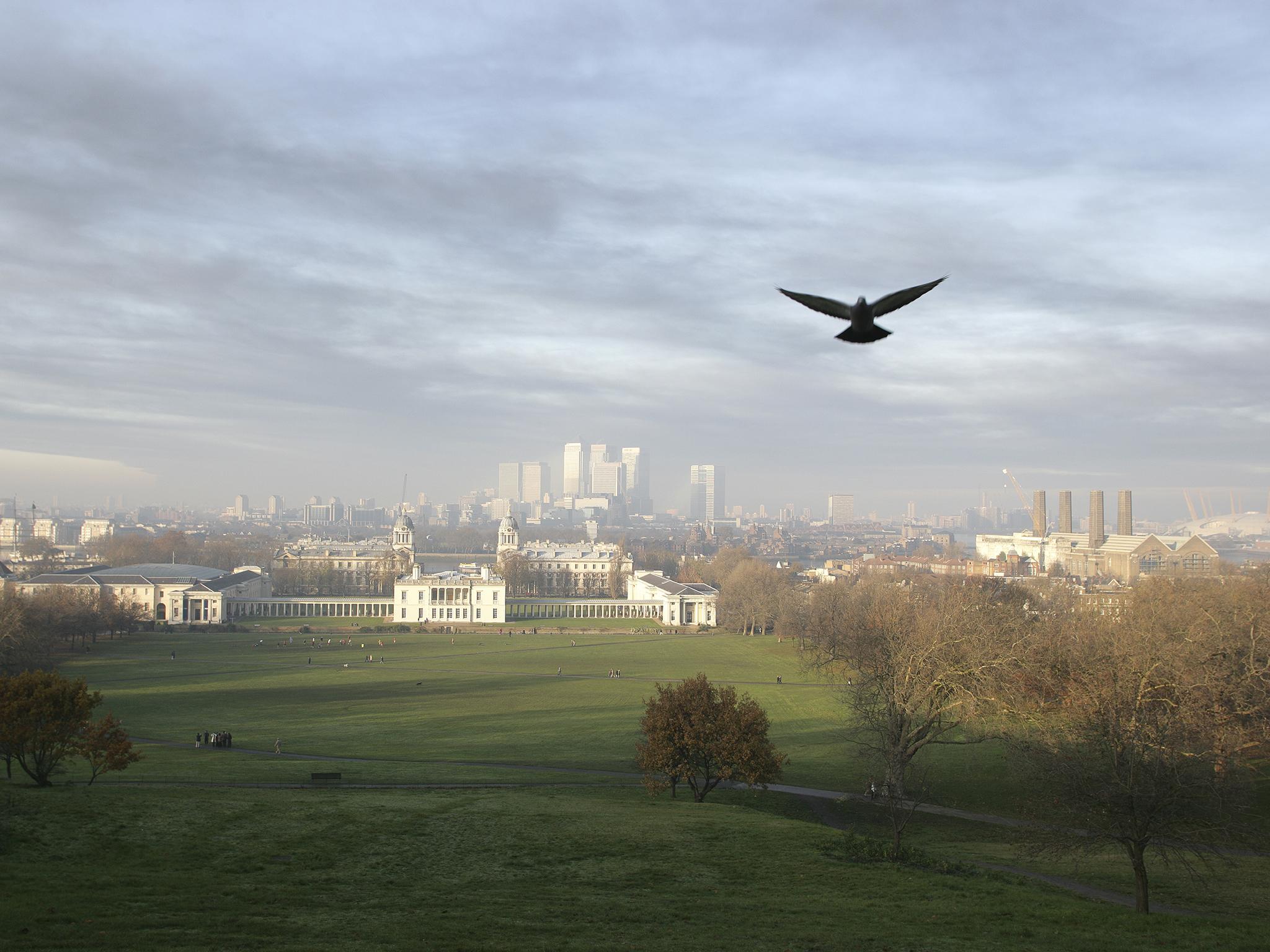10,000 people died as a result of air pollution in London last year, but there's something we can do about it
According the Natural England, one in seven children in London have not played in a natural environment in the last year

Something remarkable is happening in London. While commentators have been debating the pros and cons of building the controversial and relatively small Garden Bridge, a much bigger and more radical idea has been growing in the capital. This Wednesday evening, Londoners will be gathering at Southbank to discuss plans to transform the entire of Greater London - buildings, gardens, lampposts, pigeons and all – into the world’s first National Park City.
The idea of a city being a national park sounds paradoxical, but the proposal aims to take national park aims and principles - to conserve and enhance natural beauty, wildlife and cultural heritage – and apply them appropriately to the capital’s urban landscape.
These are not alien concepts to Londoners. For hundreds of years the city’s residents have been enclosing, protecting, improving and enjoying the capital’s green spaces. A combination of effective grassroots action and top down policies have resulted in London being one of the world’s greenest major cities. From tiny family managed gardens to professionally run metropolitan parks, around 47 per cent of London is physically green. The London data centre has recorded over 13,000 different species of wildlife in the capital, making it the most biologically diverse region of the UK.
London’s urban landscape is clearly not the same as the upland moorlands of the Lake District or the rugged cliffs of Pembrokeshire. What makes a city different from these rural landscapes is that there are millions of people who not only have the potential to protect and enjoy life, but actually create it.
We learned from the State of Nature 2016 report last week that one in seven British species are at risk of extinction and more than half are in decline. For those of us who live in towns and cities, which is over 80 per cent of the UK and 50 per cent of the world’s population, the mass extinction of species in the UK and abroad is shocking and disempowering. Influencing consumption and farming practices through our collective purchasing power and influencing policy through the democratic hierarchy is often far too slow, clumsy and ineffective.
It may be counter-intuitive, but cities like London, with its 3.8 million gardens covering 24 per cent of the city, are major opportunities for a green revolution. A blend of crowd conservation and positive idle stewardship could radically transform London into an even greener, wilder and more resilient city – and we shouldn’t just do it for the wildlife.
According the Natural England, one in seven children in London have not played in a natural environment in the last year. This is not because of a lack of parks or nature reserves, but because of a range of social and cultural barriers that prevent or distract them from visiting natural environments. This almost certainly has an impact on their development, physical and mental health.
National parks contribute up to £6.3bn to the economy each year, yet cost less than £1 per person. Considering wider economic and wellbeing benefits, obesity costs £900m a year, (£7m on childhood obesity, with one in five of the capital's children overweight). In addition, mental health conditions cost London around £26bn a year. Being active outdoors in an open space through playing, walking, outdoor fitness classes and spending time with others improves our collective health.
Of course, our green, blue and wilder spaces are not just important for children. They contribute to the health and productivity London’s workforce, the wellbeing of pensioners and directly contribute to the mitigation of hazards, such as air pollution and flooding. It’s now a well-known fact that nearly 10,000 people died as a result of air pollution in London last year.
The good news is that across London there is all the expertise, practices and skill that is needed to turn these issues around. From gardeners and friends groups and stand-up paddle boarding clubs and research institutions, London has all the ingredients that are needed to trigger a green revolution. Making London a National Park City will create a new identity and vision for the capital that will help drive demand for new products, services and ideas that will help these best practices to increase and spread.
Core long-term aims of a London National Park City would include to make the majority of London physically green, to increase the richness and biodiversity of the capital’s habitats and to connect all of the capital’s children to nature. If successful, these actions alone would have the potential to improve the health of all Londoners, as well as the local wildlife and environment.
This is something that has never been done before. We started this campaign two years ago and have been working tirelessly ever since to declare London a National Park City outside of legislation.
With backing from the Mayor of London and local politicians across the capital, it is looking very likely that the campaign will be successful.
Taking place on Wednesday evening The Making of a National Park City is a series of 20+ short talks that explore how and why London should be a National Park City. Speakers include campaigner Fiona Reynolds, economist Andrew Simms, designer Wayne Hemingway a GP, poet, firefighter, photographer, psychotherapist, gardener and many more.
Join our commenting forum
Join thought-provoking conversations, follow other Independent readers and see their replies
Comments
Bookmark popover
Removed from bookmarks